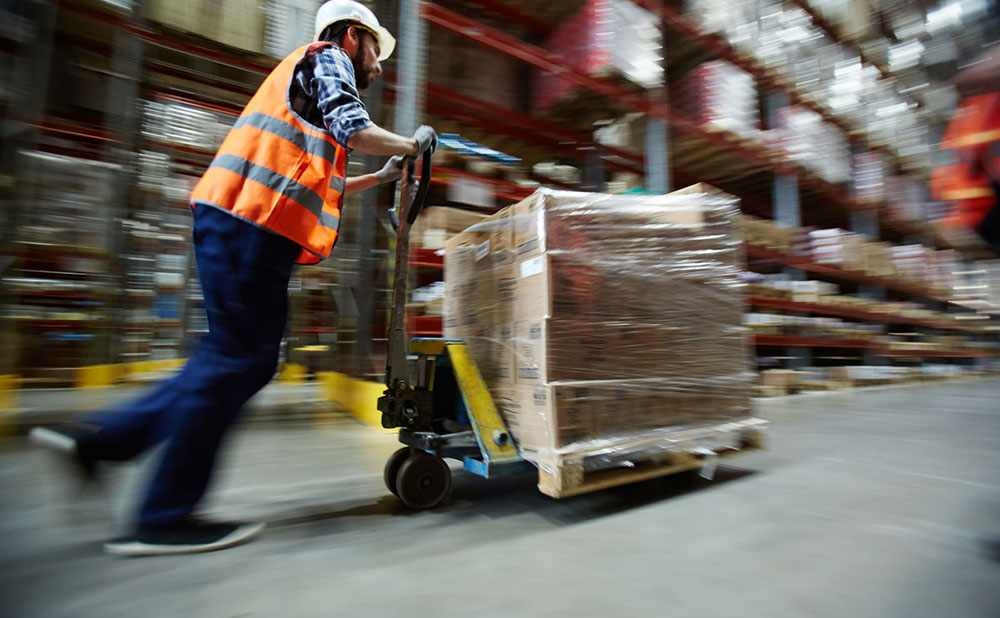
The warehousing industry is entering a new era of automation . Warehouses worldwide are increasingly adopt ing robotics and smart technology to perform a wide range of tasks, from picking and packaging to security and inventory management. Last year, the warehouse automation market was valued at almost USD $20 billion — and is forecast to grow to over USD $54 billion by 2030. 1 Ac cording to Accenture’s Supply Chain Survey, investment in warehouse automation is now one of the top priorities for senior supply chain executives.
But the use of smart technology is about more than just making efficiency gains. Many warehouses in New Zealand are currently grappling with labour shortages which are affecting their ability to meet demand. New technologies provide an opportunity to make warehouses a more interesting and fulfilling place to work — playing a valuable role in attracting and retaining talented staff, while helping warehouse managers handle higher workloads with fewer employees.
In New Zealand, changing demographics mean that one third of workers are now aged 55 or above. The ageing population has resulted in fewer available workers as older warehouse staff approach retirement. At the same time, younger people are less interested in the monotonous nature of warehouse work — making it harder for warehouses to replace retiring employees.
The pandemic widened the skills gap, with the ecommerce boom driving an increase in customer orders and demand for faster deliveries. While new warehouses are being built to keep pace with higher shipping volumes, they’re finding it challenging to secure the workers they need to operate efficiently.
With labour shortages projected to continue into 2023, a growing number of warehouses are turning to smart technology solutions like automation systems and robotics. However, rather than replacing warehouse staff, these technologies are being used to enhance the existing workforce by automating repetitive and time-consuming tasks.
Smart technology can help attract and retain employees in three key ways:
1. Driving speed and efficiency
Smart technologies and automation enable warehouses to streamline their processes — maximising speed and efficiency while reducing the risk of human error. This helps busy warehouses keep up with increased demand and ensure accurate fulfilment, without letting tight deadlines place additional pressure on workers. In a less-stressed working environment, employees can focus on meaningful activities and boost their own productivity.
2. Improving safety
A 2022 study found that 60% of warehouse workers were feeling positive about automation—largely due to its potential to improve safety by handling physically demanding labour, such as lifting and carrying. Forward-thinking companies are now providing workers with exosuits, a soft-shell that helps reduce the risk of physical injury, strain, and fatigue. Wearable sensors can also be used to capture workers’ movement data to assess and minimise individual injury risk.
3. Increasing job satisfaction
Smart technologies are improving conditions in warehouses: workers are spending less time walking, lifting, and doing monotonous tasks, such as retrieving carts and palletising. This frees up their time for more interesting work, helping them stay motivated and engaged—and increasing overall employee satisfaction. In a recent study, one-fifth of warehouse workers said that the support from automated tools enabled them to do their jobs better, expressing optimism that the customer experience would improve as a result.
As warehouses be come increasingly automated, some workers may fear that robots will replace their jobs. They might also have concerns around how to safely work with new technologies when they may have little or no technical expertise. That’s why it’s so important for warehouse managers to be proactive in providing employees with the tools and information they require to understand the opportunities that smart technology offers.
To get the most out of new tools and technology, warehouses need to provide hands-on training programmes with real-life simulations for operating machinery, including how to fix any issues or malfunctions that may arise. When employees feel confident about working effectively and safely alongside robots and automated tools, they can enjoy the benefits of a safer and more efficient workplace.
5 smart technologies to consider adding to your warehouse